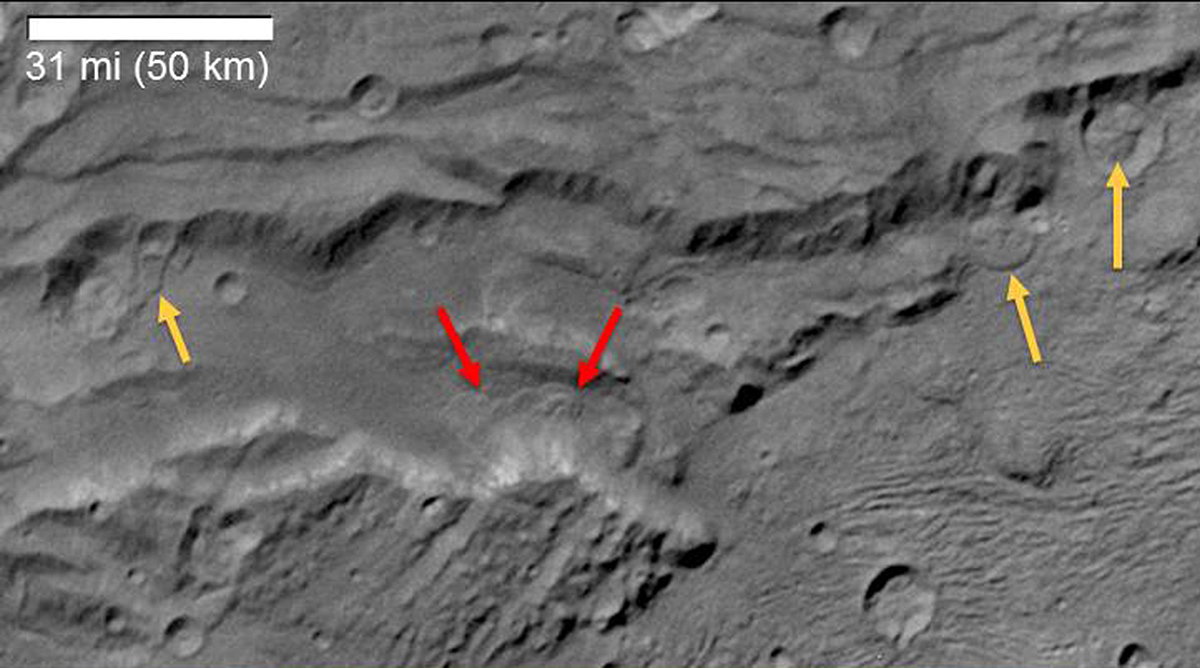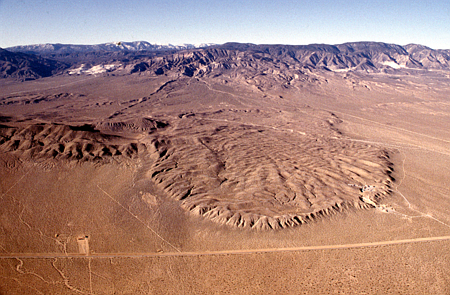
Even though the New Horizons Mission completed its flyby of the Pluto system more than four years ago, analyses of the treasure-trove of data returned continue to reveal how complex and colorful this system really is.
In our research group meeting today, we discussed a recently published analysis of landslides observed on Pluto’s moon Charon from Chloe Beddingfield of the SETI Institute. (Before continuing, let’s just pause for one second to reflect on the fact that we can talk about catastrophic geological events on a world almost 8 billion kilometers from Earth …)
Discovered in the 1978, Charon is the largest of Pluto’s five moons, about a third the radius of our Moon, and is made of about half rock and half ice.
As New Horizons zipped past the Pluto system back in 2015, it snapped lots of relatively high resolution photos of Charon’s surface, revealing an icy surface covered in craters, ridges, faults, and other weird geological features we don’t understand.

Among these striking features, landslides stood out prominently. Landslides on Earth often happen when an unstable hill or ridge becomes saturated after a rainstorm (as happened a few years ago in Boise).
On Charon, though, there is no rain (or atmosphere for that matter), so the landslides there probably occurred as the result of seismic activity, that is, a moonquake.
An enduring mystery of terrestrial and extraterrestrial landslides alike is why they are able to run out for such long distances even though they don’t fall very far.

These very long landslides are unimaginatively called long runout landslides. The Blackhawk Landslide in the San Bernardino mountains, for example, fell about 1 km but ran out for more than 8 km. Scientists have speculated the landslides may be cushioned by a layer of trapped air, which reduces friction as they rumble along.

Since it has no atmosphere, Charon’s landslides can’t be cushioned by air, and so Beddingfield and colleagues set out to determine whether these landslides are also anomalously long. By carefully mapping the landslides’ topographic profiles using New Horizon’s imagery and altimetry data, they found the landslides ran out between two and four times farther than they should have, based on the available gravitational energy.
These results confirm that long run-out landslides have made the long run-out all the way to the Pluto system, and something besides atmospheric cushions must be responsible. Other explanations include powerful sound waves carried along by the tumbling debris itself, a hypothesis called acoustic fluidization — which would be a great geology-based cover band name.
This study shows us we still have a lot of learn about the most distant objects in our solar system. Even though Charon may be the moon of a dwarf planet, it seems to have the same geological potency of a full-sized planet.
